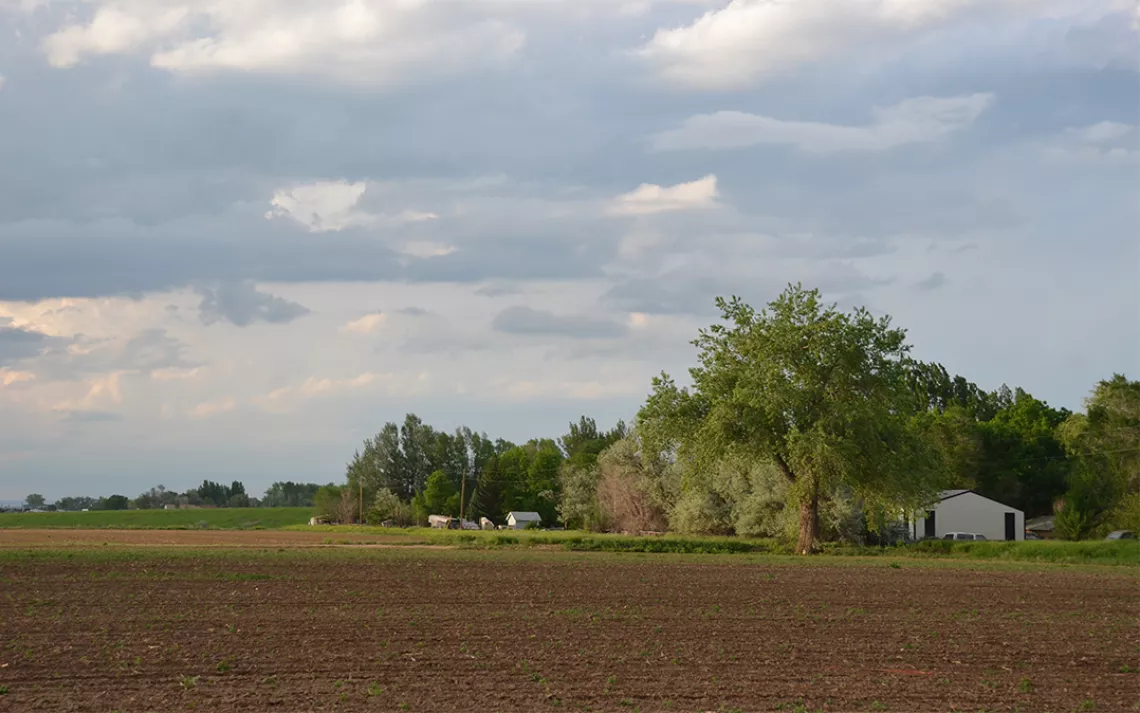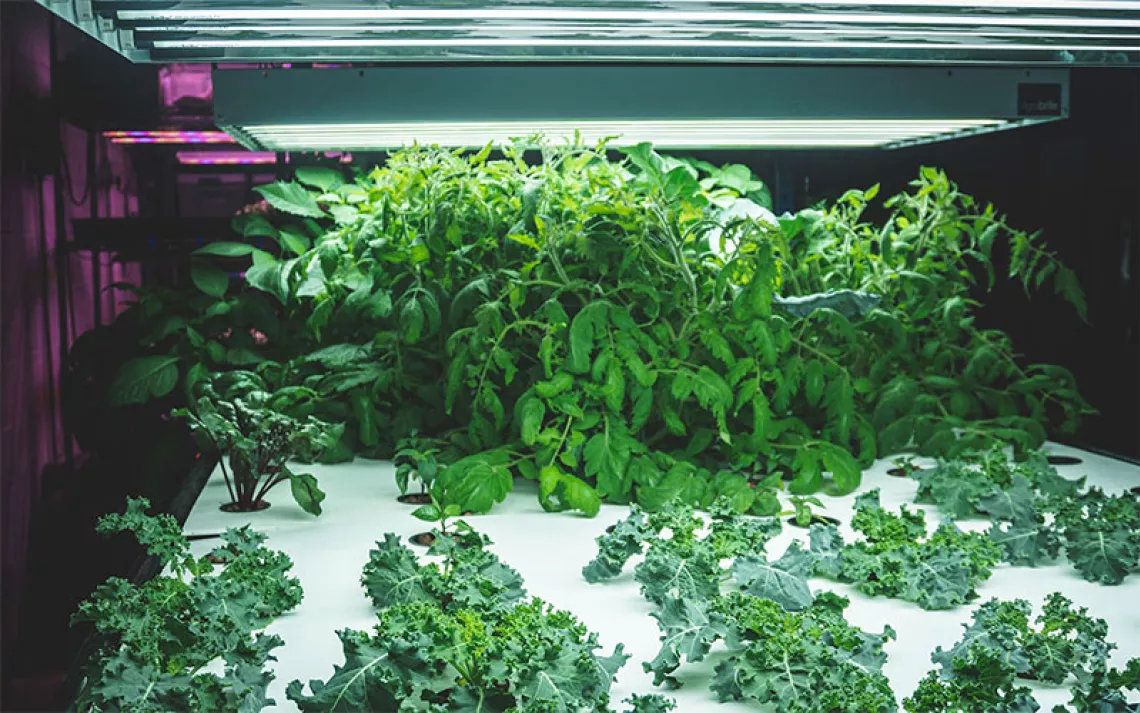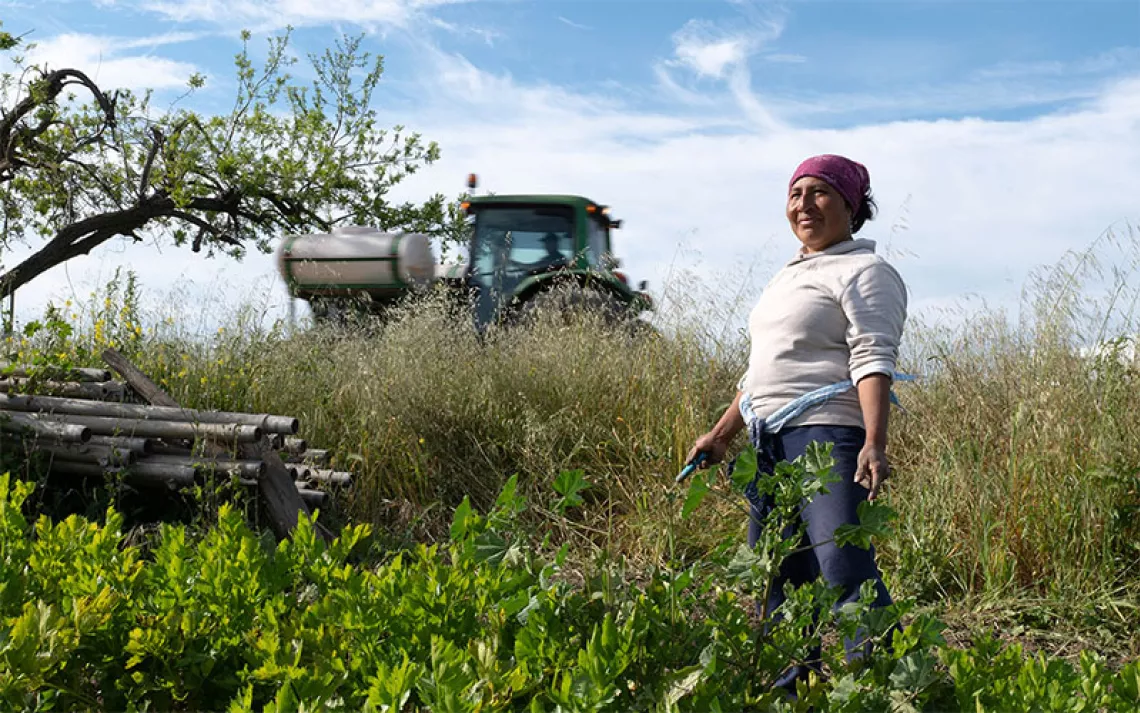This Land Is Our Land
How some pioneering Colorado farmers are modeling their operations after a Minnesota real estate cooperative

Photos courtesy of Poudre Valley Community Farms
Drive along the northern edge of Fort Collins, Colorado—a booming college town with deep agricultural roots—and you’ll likely find yourself stuck behind a tractor or gazing into the foothills through rows of cornstalks. For generations, farms have stretched from the base of the Rocky Mountains to these eastern plains. In 2017, with most of its available land on the brink of development, Fort Collins still holds tight to its farming and ranching roots.
This is notable, as 68 percent of young and beginning farmers identify land access and capital as their biggest issues, according to the National Young Farmers’ Coalition. Between 1997 and 2012, the United States lost nearly 25 million acres of farmland to development. In the next two decades, as aging farmers retire, roughly two-thirds of the country’s remaining independently owned agricultural land—more than 573 million acres—is expected to come up for sale. Thanks to “highest and best use” real estate appraisal standards, much of this property will be too expensive for beginning farmers’ budgets. So despite growing demand for local and regional food, access to these products is likely to become less secure. In response, nonprofit land trusts and investor-driven corporations have sprung up throughout the country with the goal of preserving farmland while supporting beginning farmers. In Fort Collins, many wondered, What if the community owned the land? And two years ago, two of its struggling farmers landed on a local solution to a nationwide problem.
 Katie Slota and Nic Koontz founded Native Hill Farm eight years ago, when they took over a friend’s lease on a three-quarter-acre parcel in Fort Collins. Since then, Slota and Koontz have done what most young farmers in the United States do: They have produced food on land that doesn’t actually belong to them. Such short-term leases, which dominate small-scale agriculture, hinder investment in the property and the soil, making organic farming difficult and organic certification near impossible.
Katie Slota and Nic Koontz founded Native Hill Farm eight years ago, when they took over a friend’s lease on a three-quarter-acre parcel in Fort Collins. Since then, Slota and Koontz have done what most young farmers in the United States do: They have produced food on land that doesn’t actually belong to them. Such short-term leases, which dominate small-scale agriculture, hinder investment in the property and the soil, making organic farming difficult and organic certification near impossible.
Although Slota and Koontz now farm seven acres and feed about 450 households—via CSA members, market shoppers, and wholesale customers—lack of ownership has made expansion, as well as personal and business security, a challenge. So when the corn farmers across the street announced plans to retire and sell their land, Slota and Koontz saw an opportunity.
“We were looking for this maybe-20-acre parcel with water that was near town and had a house and good soil. And there weren’t a lot of those around,” Slota says. “Fifty acres is more than we were looking for, but it’s harder to find smaller parcels. It wasn’t a bargain sale or anything, but it was nice because they said, ‘We’ll give you time to come up with the money. [So we asked ourselves] what would a mortgage look like on a property like that? The mortgage would have been too big of a stretch. There’s no infrastructure. It just felt like it was too much. So [we wondered], what does community-owned farmland look like?”
To find out, Slota and Koontz assembled an advisory committee of bankers, commercial real estate professionals, land trust representatives, and community residents. The goal? Figure out how to buy the available 50-acre parcel. But they also had a bigger vision: to develop a model that would conserve farmland in Fort Collins and help fellow food producers access land for the long haul.
After months spent trying to identify the right business structure, they finally landed on their unlikely model for Poudre Valley Community Farms (PVCF): the NorthEast Investment Cooperative, a Minneapolis real estate co-op committed to neighborhood revitalization. PVCF, a multi-stakeholder cooperative, emerged as the first and only agricultural land cooperative of its kind.
Seth Jansen, PVCF board president, explains the decision: “We knew we wanted to be able to take large donations. . . . We knew we wanted to take small donations. . . . But then we also had the sense, especially from the younger people in the room that they wanted to own this land, that they wanted to have a different relationship with it than just giving money one time and then filing their tax return—getting their deduction, and walking away.”
The resulting enterprise allows members to buy in at different levels and receive corresponding dividends based on their purchases from food producers. PVCF offers market-value long-term leases—10, 20, or 30 years, based on individual needs—to beginning farmers who are committed to feeding local communities sustainably.
“Our business model is self-sustaining,” says Jansen. “Once the land is purchased, we can make the returns to our investors, make the dividends payments to our members, and pay for our staffing. That’s all baked into our business model.”
PVCF raised most of the money for its first property in less than a year and won grant-funding for a conservation easement, which will protect the agricultural status of the land indefinitely. The co-op is poised to close on its pilot property in March. Since Native Hill Farm served as the impetus for the project, as well as PVCF’s pilot property, Slota and Koontz will serve as the co-op’s first producers. However, PVCF hopes to acquire 200 acres by 2020, and is already laying the groundwork for its second project, with a meat producer. The specifics will vary from case to case, but the cooperative plans to recruit members and raise funds for each property it buys. As of today, there are about 90 participating members.
After closing, Slota and Koontz will ready the land for sustainable organic production. They’ll install infrastructure, cover crops, and ecosystem services such as windbreaks, irrigation projects, and native pollinator habitat. They plan to grow their first, small crop of vegetables in 2018.
Such benefits of the multi-stakeholder model address many of the larger land access issues that characterize contemporary agriculture in the United States: “The retiring landowner gets money for retirement,” Slota explains. “The community gets land conserved and local agriculture. And when they [the leasing farmers] retire, our money isn’t going to be tied up in the land, so we won’t have to sell to the highest bidder to retire. So, we’re not just kicking the can down the road.”
WHAT YOU CAN DO
Northern Colorado has particularly favorable co-op laws as well as vibrant urban centers that support locally grown food. The multi-stakeholder cooperative model may not work everywhere, but PVCF urges communities interested in trying something similar to get in touch with questions. Nonetheless, some other organizations are thinking outside the box to preserve America’s agricultural land.
Sustainable Iowa Land Trust: Unlike most land trusts, this nonprofit purchases land outright and leases it back to farmers. Focused on Iowa’s small farms, SILT promotes education and works with city planners to show that development and agriculture don’t need to be mutually exclusive.
Farmland LP and Iroquois Valley Farms: These two investment companies purchase land throughout the country, transition it to organic, and provide long-term leases to independent farmers. Farmland LP manages more than 13,000 acres in Northern California and Oregon. Iroquois Valley Farms holds properties throughout the U.S., including in Michigan, Kentucky, Illinois, and New York.
 The Magazine of The Sierra Club
The Magazine of The Sierra Club



